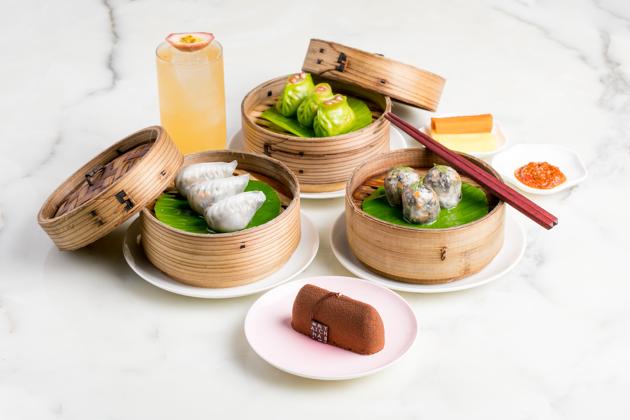Drop that momo and switch to dim sum, says Kunal Vijayakar
‘Why are the doughy lumps so popular? I’ve never been able to figure. For me, it can only be the finely crafted and delicately flavoured dim sum.’
I hate momos, and trust me, I’ve tried them everywhere. I’ve tried the Thapa stalls in Mumbai, sought them out at Dilli Haat in Delhi, suffered Chowpatty in Pune, and endured the Kalimpong momo guys in Kolkata. Wait, I’ve also scoured the most revered and lauded momo sellers in McLeod Ganj and Dharamsala.

I’ve tried them on highways, in homes, in cafes. Had them steamed, pan-fried and deep-fried. Packed with carrots, beans, cabbage, pork, mutton, chicken; even chocolate. But I have failed — miserably failed — to understand why momo apostles swear by that thick, fat, dough-laden lump with its strikingly vapid cargo. Why can I not see what the momo groupies can espy? So why do I not like momos? Maybe it’s because I always end up comparing a Momo to finely crafted Dim Sum.
The Dim Sum is the exemplar of Asian cooking, at least I think it is. It’s the art in the craft of food. Legend has it that the Dim Sum originated in the Guangdong (or Canton) Province of China, and in Cantonese means ‘touch the heart’. It’s supposed to be a bite-sized meal that stirs something in you, without filling you up. Think of it as high tea, in its most delicate, Chinese avatar.
Dim Sum lore can be traced back over a thousand years. The weary that traversed the ancient silk route needed, on their pit stops, a little light refreshment, and so the tradition of Yum Cha (literally, drink tea) was born, where Dim Sum was paired with cups of steaming cha.
But making the snack is no easy feat; it needs a lot of skill, savvy and practice. The Dim Sum skin or pastry is most often made from flour and needs to be rolled out thin with precision and finesse. The stuffing and folding must be done with the most deft and delicate hand. The art is in the palm and fingers.
From the ’70s to the late ’90s, Nanking, Kamling and Mandarin were our customary Chinese food haunts. After a bowl of Corn and Crab Soup, the staple order for starters would be Gin Chicken Balls, Fried Wontons and Siu Mai (another name for Dim Sum). Typically, they’d serve either steamed cylindrical dumplings with crinkled skin, stuffed with minced pork, or simple steamed wontons with chicken. Occasionally we’d order the Sweet Pork Stuffed Bao at Ling’s Pavillion. That was the extent of the Dim Sum menu we knew.
Till I ate at Yauatcha in Soho, in London, a decade ago. Creativity just exploded out of that Dim Sum menu. There was Siu Mai with Scallop; Dumplings with Seafood and Black Truffle; Fun Guo (slightly larger dumplings) with chive, mooli and dried shrimp. King Crab Siew Long Bun, a type of Chinese steamed bun from Shanghai. Even Lobster Dumpling wrapped in the most gossamer skin and served with flaming orange Tobiko caviar.
Yauatcha subsequently opened in Mumbai and started a trend of dim sum restaurants like Shizusan Shophouse & Bar, KOKO and Foo (all in Lower Parel), and about a hundred takeaways scattered across the city, all doing Dim Sum. My favourites remain Royal China, Umame, Joss and Golden Dragon.
The emperor of all Dim Sum, in my opinion, is the Prawn Har Gow. A gentle dumpling of whole shrimp, steamed in a thin translucent pleated wrap, and undoubtedly the most difficult dumpling to make. It’s the exact number of pleats, the translucence and sheerness of the skin, and the gentle steam that adjudicate on its grace and eminence.
There is also the Xiao Long Bao, dumplings filled with pork, crab meat and broth, that let off a gulp of hot soup in your mouth with your first bite. Even a plain Chicken Gyoza (pot-sticker) can be a thing of beauty. The delicate, half-moon skin stuffed with finely minced chicken, ginger, soya, sesame, scallions, all first lightly browned in oil, after which water is added to the wok, and it is then covered to steam. The wok is eventually uncovered to allow the water to evaporate and let the Gyoza pan fry until they turn crispy and stick to the bottom.
Not only is the making of Dim Sum an art, so is the eating. First and foremost, you never put a whole dim sum in your mouth. You take small bites. I’d suggest you nibble, so that the dumpling cools as you eat it. As it lets off its trapped steam, you start nipping at the meatier parts, and go around the fold, till only the fold is left. It’s actually okay to leave the folded hard part of the covering behind and start on the next one.
Most Dim Sum in India is served with some sort of sauce or other — soy, chilli oil, or even English mustard. I’d go easy on the sauces and let the delicate flavours actually swamp you.
Now you tell me, could a boorish momo compare?



